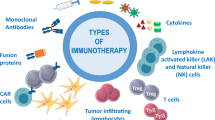Abstract
IMMUNE suppression is the specifically induced suppression of antibody synthesis by antibodies1–3 (a comprehensive review can be found in ref. 4). Suppression has been demonstrated with various immunogens, including protein molecules1,5, bacterial flagella6, bacteriophage7, red blood cells2,3,8 and other cellular antigens9, and haptenic groups conjugated to protein10. The observed specificity of the phenomenon1,8–10 implies that the passively administered antibodies must somehow combine with antigen.
This is a preview of subscription content, access via your institution
Access options
Subscribe to this journal
Receive 51 print issues and online access
$199.00 per year
only $3.90 per issue
Buy this article
- Purchase on Springer Link
- Instant access to full article PDF
Prices may be subject to local taxes which are calculated during checkout
Similar content being viewed by others
References
Uhr, J. W., and Baumann, J. B., J. Exp. Med., 113, 935 (1961).
Rowley, D. A., and Fitch, F. W., J. Exp. Med., 120, 987 (1964).
Möller, G., and Wigzell, H., J. Exp. Med., 121, 969 (1965).
Uhr, J. W., and Möller, G., Adv. in Immunol., 8, 81 (1968).
Dixon, F. J., Jacot-Guillarmod, H., and McConahey, P. J., J. Exp. Med., 125, 1119 (1967).
Horibata, K., and Uhr, J. W., J. Immunol., 98, 972 (1967).
Finkelstein, M. S., and Uhr, J. W., Science, 146, 67 (1964).
Wigzell, H., J. Exp. Med., 124, 953 (1966).
Möller, G., J. Nat. Cancer Inst., 30, 1153 (1963).
Brody, N. I., Walker, J.G., and Siskind, G. W., J. Exp. Med., 126, 81 (1967).
Nussenzweig, V., and Benacerraf, B., J. Immunol., 97, 171 (1966).
Eisen, H. N., Methods in Med. Res., 10, 94 (1964).
Eisen, H. N., Carsten, M. E., and Belman, S., J. Immunol., 73, 296 (1954).
Adler, F. L., Prog. Allergy, 8, 41 (1964).
Amkraut, A. A., Garvey, J. S., and Campbell, D. H., J. Exp. Med., 124, 293 (1966).
Author information
Authors and Affiliations
Rights and permissions
About this article
Cite this article
PINCUS, C., NUSSENZWEIG, V. Passive Antibody may simultaneously suppress and stimulate Antibody Formation against Different Portions of a Protein Molecule. Nature 222, 594–596 (1969). https://doi.org/10.1038/222594a0
Received:
Revised:
Issue Date:
DOI: https://doi.org/10.1038/222594a0
Comments
By submitting a comment you agree to abide by our Terms and Community Guidelines. If you find something abusive or that does not comply with our terms or guidelines please flag it as inappropriate.



